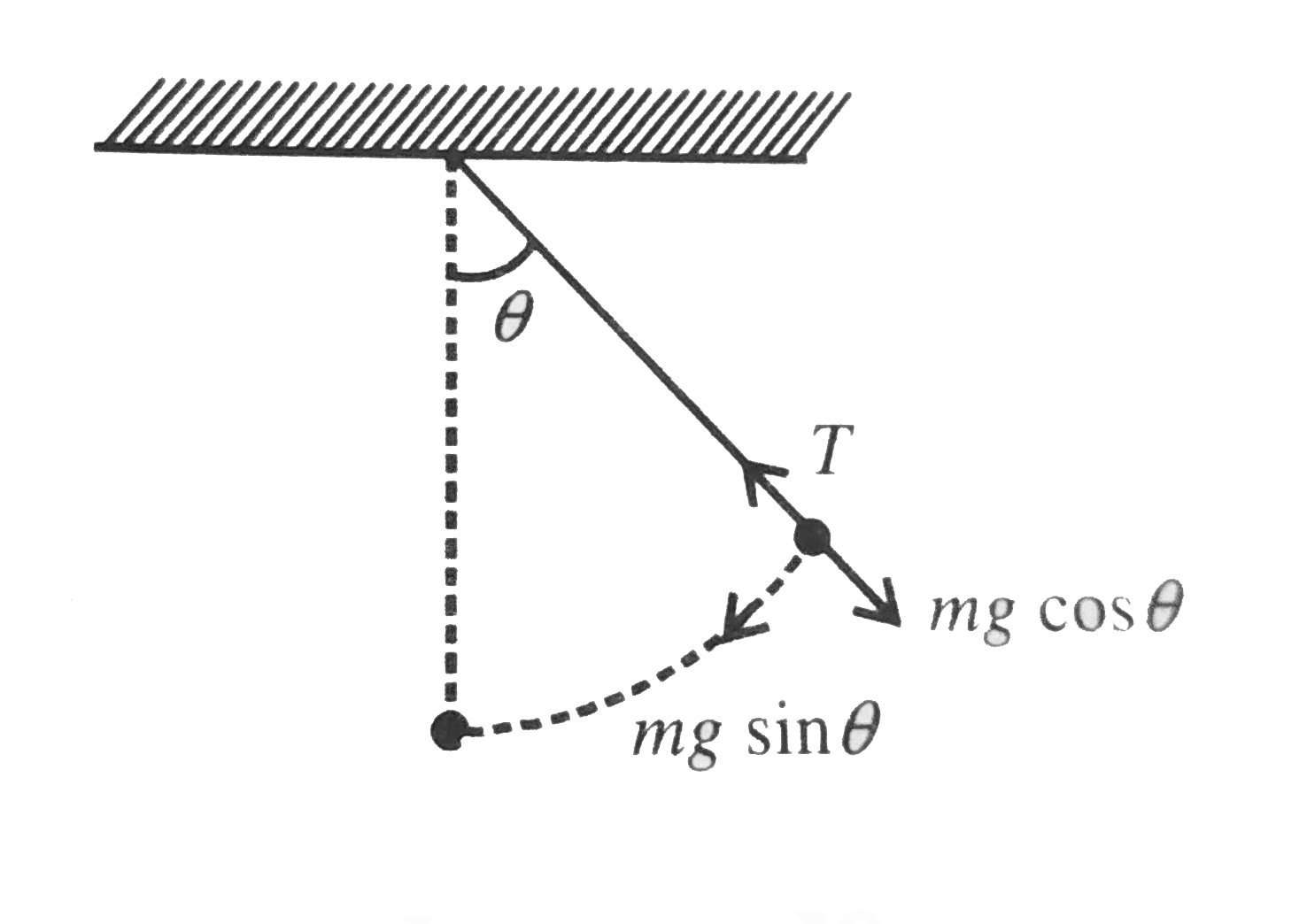STATEMENT-1 : In simple pendulum performing ., net acceleration is always between tangential and radial acceleration except at lowest point.
STATEMETN-2 : At lowest point tangential acceleration is zero.
Statement I is true statement II is true, Statement II is a correct explanation for Statement I.
Statement I is true statement II is true, Statement II is NOT a correct explanation for Statement I.
Statement I is true, Statement II is false
Statement I is false, Statement II is true
The correct Answer is:D
Topper's Solved these Questions
- BOOK - CENGAGE PHYSICSCHAPTER - LINEAR AND ANGULAR SIMPLE HARMONIC MOTIONEXERCISE - Comprehension33videos
LINEAR AND ANGULAR SIMPLE HARMONIC MOTION
- BOOK - CENGAGE PHYSICSCHAPTER - LINEAR AND ANGULAR SIMPLE HARMONIC MOTIONEXERCISE - Integer10videos
LINEAR AND ANGULAR SIMPLE HARMONIC MOTION
- BOOK - CENGAGE PHYSICSCHAPTER - LINEAR AND ANGULAR SIMPLE HARMONIC MOTIONEXERCISE - Multiple Correct35videos
LINEAR AND ANGULAR SIMPLE HARMONIC MOTION
- BOOK - CENGAGE PHYSICSCHAPTER - KINETIC THEORY OF GASES AND FIRST LAW OF THERMODYNAMICSEXERCISE - Interger11videos
KINETIC THEORY OF GASES AND FIRST LAW OF THERMODYNAMICS
- BOOK - CENGAGE PHYSICSCHAPTER - MISCELLANEOUS KINEMATICSEXERCISE - Interger type3videos
MISCELLANEOUS KINEMATICS
Similar Questions
Knowledge Check
- Question 1 - Select One
when a body performs a U.C .M Its tangential acceleration is
Av2rBvr2CvrDzero - Question 2 - Select One
A particle is performing a U.C .M along a circular path of radius r, with a uniform speed v. Its tangential and radial acceleration are
Azero and infiniteBv2r and zeroCzero and v2rDrω2 and infinite - Question 3 - Select One
In previous problem, the tangential acceleration of a point on the rim is :
ATMBMR2TC2TMDMR22T
The acceleration of a particle performing S.H.M. at extreme position is
View SolutionIn a linear S.H.M., the acceleration of the particle is zero, when its velocity is
View SolutionThe graph between instantaneous velocity and acceleration of a particle performing S.H.M. is
View SolutionA point starts from rest and moves along a circular path with a constant tangential acceleration. After one rotation, the ratio of its radial acceleration to its tangential acceleration will be equal to
View SolutionA point mass moves along a circle of radius R with a constant angular acceleration α. How much time is needed after motion begins for the radial acceleration of the point mass to be equal to its tangential acceleration ?
View Solution



